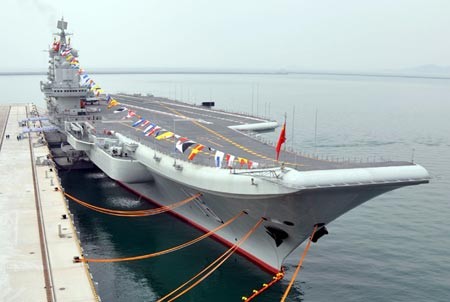Sometime next year, the Liaoning aircraft carrier expects to gain its first aircraft battle group in order to compensate for the limited combat radius of existing fleets, according to Xinhua News Agency.
China is looking at various strategies in forming its aircraft carrier battle group, according to the report.
Earlier in 2014, the ship undertook its first blue-water passage voyage while accompanied by vessels of different classes.
Before the PLA Navy inaugurated the carrier in 2012, it was previously a Soviet-era ship, purchased from Ukraine in 1998 and then subsequently refitted to meet the needs of national defense.
With a driving power of 200,000 horsepower, the Liaoning has a displacement of 67,500 tonnes at maximum load.
Reports also say that a new carrier has been developed since 2013 and is projected to have "initial combat ability" in 2020.
The Chinese navy's deputy chief of staff, Song Xue, mentioned in 2013 that the country will acquire more than one aircraft carrier.
In addition to the abovementioned developments, China is also upgrading its existing vessels with advanced weapon technology.
The Chinese navy's latest frigate model, for instance, had its missile capabilities upgraded to Russian-made P-270 supersonic anti-ship missiles and the locally produced YJ8A missiles.
In the report, the country is also developing new cruisers. Estimated to weigh 10,000 tonnes, these cruisers are planned to have anti-ship, anti-air, magnetic weapons, and ship-based cruise missiles in the future.
China's move to develop its national defense is largely seen by observers as a reaction to escalating tensions in the territorial dispute in the South China Sea.
Experts have observed that over the years, Beijing's military budget has been gradually increasing.
The country explains that its military spending is a necessity in order to modernize the People's Liberation Army.




























